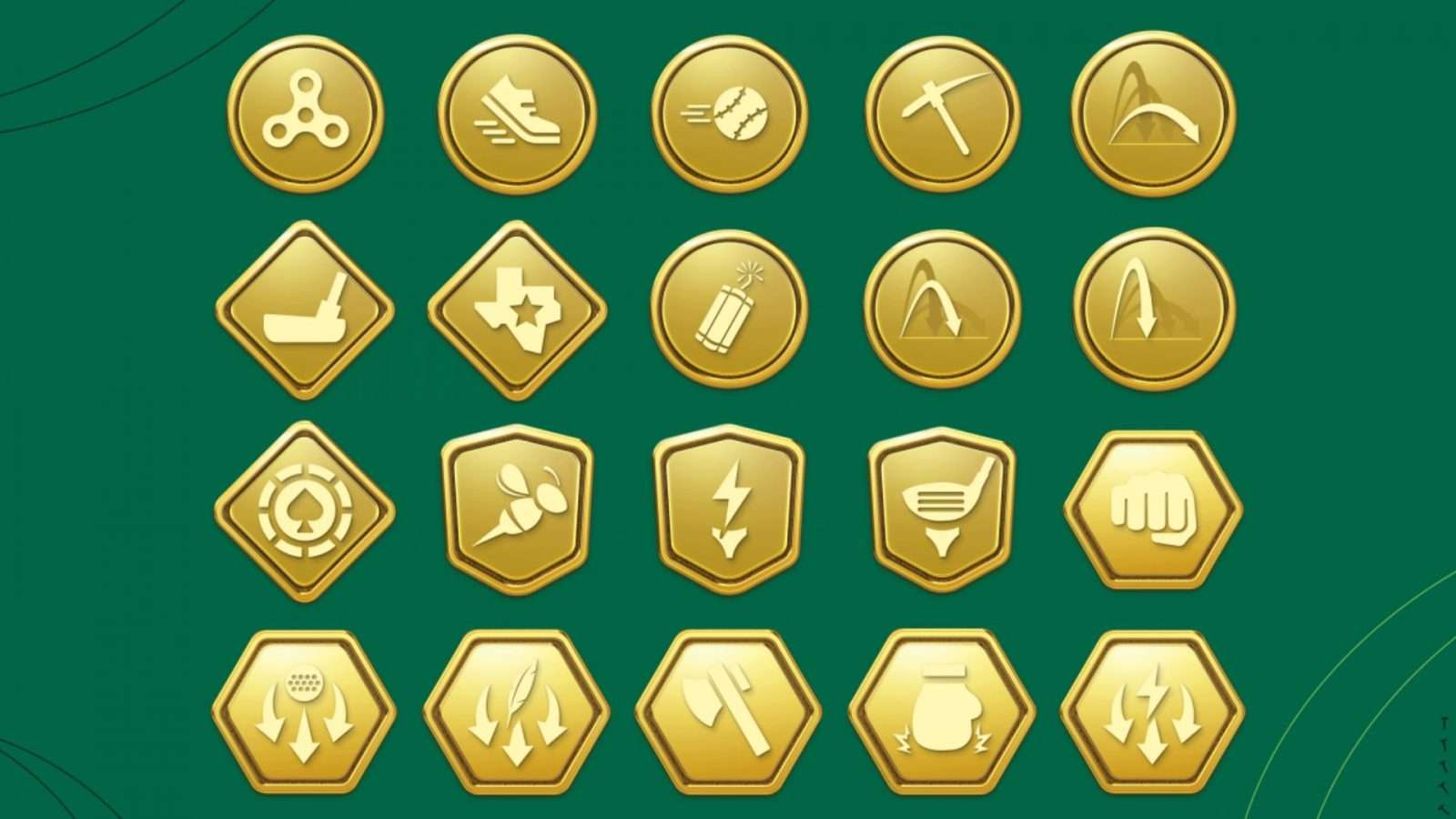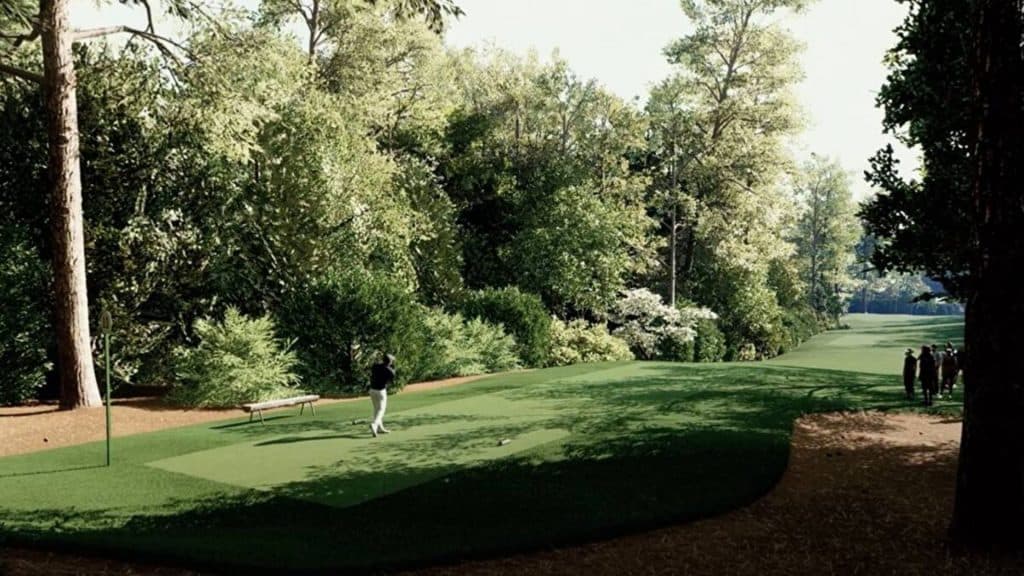All shot types in EA Sports PGA Tour: Every shot explained
 EA Sports
EA SportsEA Sports PGA Tour has a large pool of shot types to give players more freedom and creativity over their golf game. There are 20 shot types in total, so let’s run you through each of them and what they can do for you.
As well as immersive graphics and presentation to keep you invested in EA Sports PGA Tour, the team have also refined and reworked the gameplay since the days of Rory McIlroy PGA Tour.
One of the fresh additions is the abundance of shot types at the players’ disposal. From driving to bunker shots to the meticulous nature of putting, shot types allow you to tweak specific aspects of your shot and are designed to offer tighter control in the game.
So that you have one quick and easy hub to see them all, here’s a guide for every EA Sports PGA tour shot type and their outlined purpose.
 EA Sports
EA SportsShot types in EA Sports PGA Tour explained
Just to reiterate, there are 20 different shot types to master in EA Sports PGA Tour, and each one plays a significant part in the overall strategy of a golf hole. We encourage you to use each one, practice with them in casual rounds, and see which ones you can incorporate into your repertoire.
- Drive: A standard full swing shot to get consistent distance and accuracy off the tee.
- Power Drive: A more powerful full swing when the golfer wants to get more distance off the tee. It comes with a slightly larger shot dispersion than the Drive as a result of the extra effort put into the swing.
- Stinger: A really low and powerful shot that keeps the ball under the wind and generates a lot of roll. Great for use in windy conditions and on firm, fast courses as it allows the terrain to generate the distance with massive rollouts.
- Approach: A standard full swing shot to get consistent distance and accuracy from terrain.
- Power Approach: A more powerful full swing when the golfer wants to get more distance from terrain. It comes with a slightly larger shot dispersion than the Approach as a result of the extra effort put into the swing.
- Punch: A really low shot without a lot of power that keeps the ball under the wind and generates a lot of roll. Mainly used to get out of trees and back onto the playable area of the course.
- Knock Down: A full swing shot that gets the ball to fly lower than a normal approach but high enough to still land soft and stop. Mainly used to minimize the impact of wind or on softer courses to prevent the ball from spinning back too much. It can also be used from the tee box.
- Finesse: A shorter more versatile shot that can go a wider variety of distances than the Approach. Mainly used when you are at a distance that is between clubs on your normal approach or when you get too close to the green for an approach but you are too far for the short game shots. It can also be used from the tee box.
- Hack: A powerful full swing shot that is only used from the first cut, second cut or heavy rough. It has less power penalty from these thicker grasses than the other shot types and is a valuable asset on courses with very thick and penalizing longer cuts.
- Pitch: A standard half swing shot that gets the ball up onto the green with a normal amount of roll out. It can be used anywhere around the green except for Bunkers.
- Runner: A lower flying half swing shot that can also be used anywhere around the green except for Bunkers.
- Spinner: A half swing shot with more speed. This speed helps generate more spin on the ball and gets it to check up instead of roll out after landing. You can use it in the Fairway, Fringe and First Cut.
- Flop: A long swing that lobs the ball high into the air and lands softly on the green. It can be used anywhere around the green except for Bunkers.
- Long Flop: A version of the flop that goes a greater distance, but has a larger shot dispersion. It can be used anywhere around the green except for Bunkers.
- High Flop: A version of the flop that goes extremely high, lands and stops immediately. It can be used anywhere around the green except for Bunkers and Heavy Rough.
- Blast: A shot specifically used out of Bunkers. This swing hits the sand behind the ball to loft it up out of the Bunker and onto the green.
- Pick: An alternative shot out of Bunkers. This is a cleaner strike that hits less sand and more of the ball, allowing for more spin and less rollout.
- Putt: A stroke with a putter that instantly gets the ball rolling and is only used on the Green or Fringe.
- Chip: A short putting stroke style shot with wedges and short irons that bumps the ball up into the air for a few yards and gets it rolling very quickly. It is mainly used when right next to the green to bump the ball over a bit of longer cut terrain and onto the shorter cuts that will let it roll.
- Texas Wedge: A stroke with the putter that instantly gets the ball rolling but can be used when not on the Green or Fringe. Judging the distance with it can be tricky, but this shot is extremely effective once it is mastered.
That’s everything you need to know about EA Sports PGA Tour’s shot types. Of you want even more info on the game, we have many more guides to check out:
Will EA Sports PGA Tour be on Nintendo Switch? | Will EA Sports PGA Tour be cross-platform? | Will EA Sports PGA Tour be on Xbox Game Pass? | EA Sports PGA Tour Achievements & Trophies | EA Sports PGA Tour PC Requirements: Minimum & recommended specs | EA Sports PGA Tour editions & pre-order bonuses | Does EA Sports PGA Tour have turn order? | Fastest ways to earn XP in EA Sports PGA Tour | What are Tickets in EA Sports PGA Tour? | EA Sports PGA Tour review